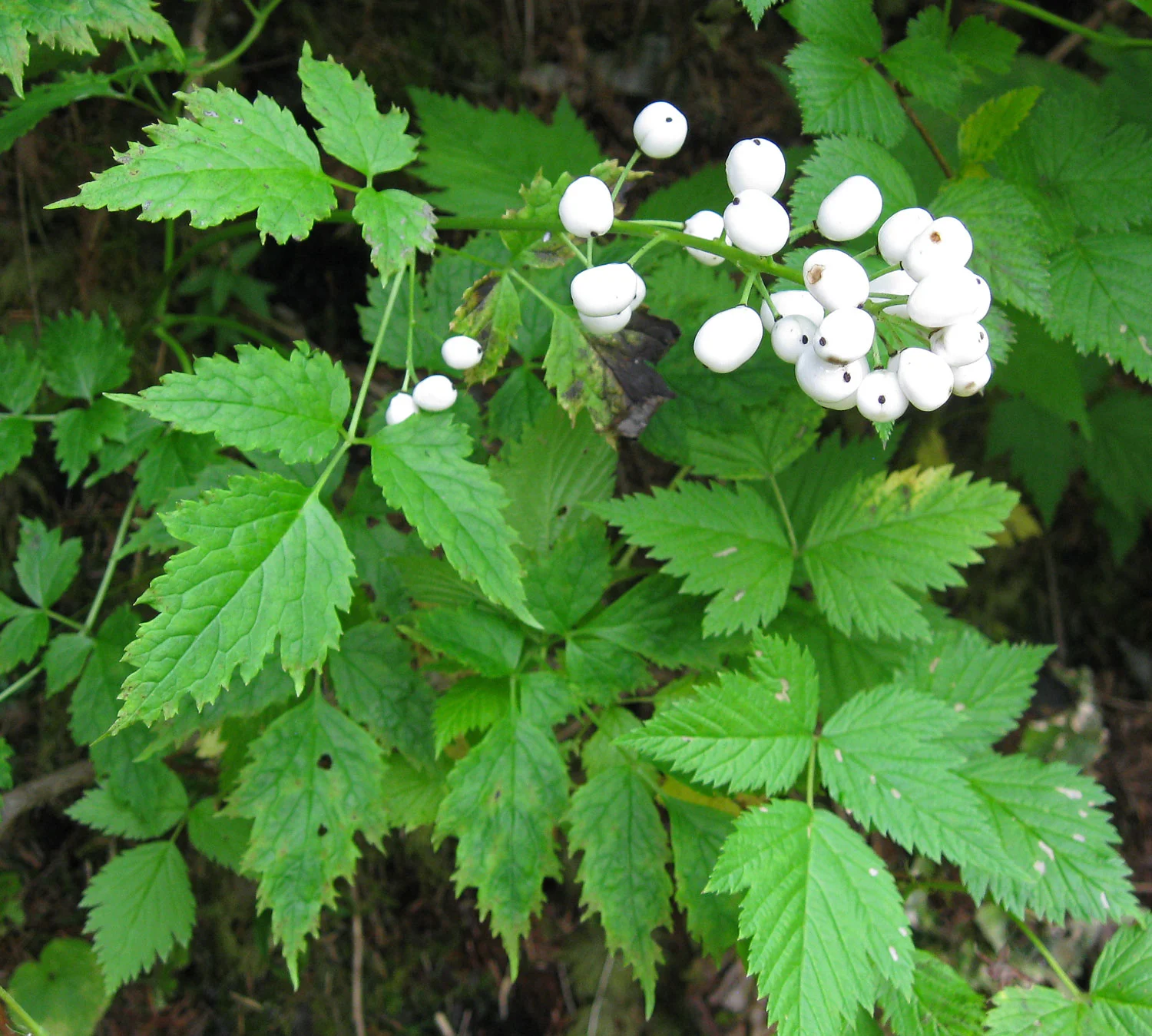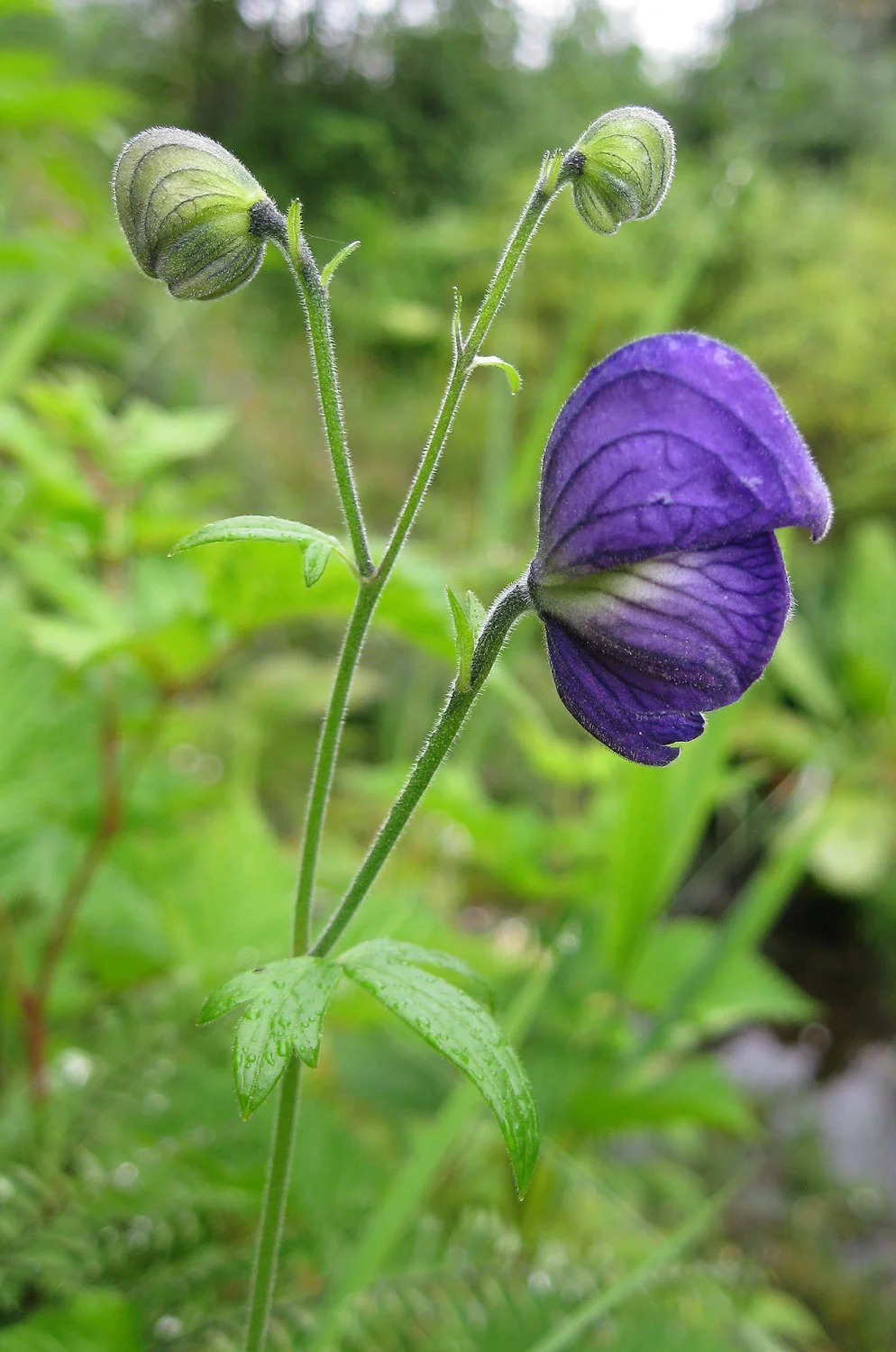A Few Poisonous Plants
/*Please Note* This is serious stuff, and I'm not mincing words in this post. Parents, please pre-screen this page to decide if it is appropriate for your children. This is an introduction to several plants, and is not a technical monograph of each plant.
I've been telling you about plants that you can eat or use for medicine for awhile. Now, just so that I don't lead you into thinking that nibbling on ALL of the pretty leaves is okay, I will highlight a few of the poisonous plants in Southeast Alaska. I don't mean just barfy poisonous, I mean they can kill you. No reset button. Ever. So they are worth getting to know so that you can avoid them.
Say hello to baneberry:

Baneberry hanging out with salmonberry. Baneberry leaves on the left, and salmonberry leaves on the right.

Red baneberries just ripening. Note the more rounded leaves.


The entire baneberry plant is poisonous. The shoots can vaguely resemble fiddleheads in the springtime, but if you are at all observant then you won't confuse the two. The blossoms are frilly white clusters. Leaves can be somewhat like salmonberry leaves.
Baneberry is a shrubby plant that proudly displays red or white berries in a cluster above it's leaves. The berries are shiny and quite attractive, but leave them alone because they are deadly. Eating just a few baneberries can cause sharp stomach pains, vomiting, dizziness, make your breathing stop, and give you a heart attack. The rest of the plant is no friendlier - right down to the roots.
This is monkshood:

The lovely blossoms may invite you to put them into a bouquet, but why pick flowers that are so poisonous that you have to wash your hands after you touch them?
This is another plant that has no safe parts. Ingesting even a small amount can cause death within hours.

Monkshood leaves appear similar to wild geranium.
Meet false hellebore:


This image has been Photoshopped to isolate the form of one false hellebore plant. Pretty, no?
I have to admit a great fondness for this plant. It is only a love of the plant's beauty, though, as (here we go again) it has no compunction about murdering mammals. My enjoyment of false hellebore is purely visual.
Large, pleated leaves curve out of the stem in a graceful dance. During the summer it grows a spike up to eight feet high that cascades out sprays of green blossoms.
It is during the spring, though, that false hellebore causes most poisonings. At a very early stage the shoots can look similar to several kinds of edible shoots. The unwary forager can expect severe gastrointestinal distress or worse from eating this plant. Numbness and paralysis are symptoms, and asphyxia from paralysis may lead to the end.


Mature, blooming false hellebore plants.


Cow Parsnip:
Let's lighten this up a little. Not all of the poisonous plants will kill you. Some just give you blisters, pain, respiratory distress, and eye damage, like cow parsnip.
I haven't talked about cow parsnip as an edible, which it can be, because every year a few people in Alaska go to the hospital after eating this plant. Now with knowledge, care, and if you are not allergic to it, certain parts of the cow parsnip are edible and medicinal.
There is a very deadly plant that looks very similar, though, so please know EXACTLY which plant you harvest. (Oops, I didn't really lighten that up, did I?)

I've had itchy, ouchy blisters from brushing lightly against cow parsnip while hiking. People have had severe reactions from trying to eradicate this plant from the disturbed soil that it loves. Heavy gloves are not always enough. If you want to use a weed-eater to cut cow parsnip I would recommend a full Tyvek suit, respirator, and eye proctection. Any little splatter will burn you, so better yet just don't weed-eat it. And don't burn it! Just don't burn cow parsnip. Blisters in your lungs would hurt.
Here's quick shots of two more types of berries to avoid:
Queen's cup, also called blue bead, is in the lily family. It is considered poisonous.

Devil's club berries are poisonous to humans.

That's probably enough for today, don't you think?
Wishing you a healthy New Year!
Alaska Beachcomber
Books with more info: A Guide to Deadly Herbs by Julie Gomez, Discovering Wild Plants, Alaska, Western Canada, the Northwest by Janice Schofield, Wild Edible and Poisonous Plants of Alaska from the Cooperative Extension Service
Please go to the Food and Medicine from Nature index to learn more about Southeast Alaskan plants!

